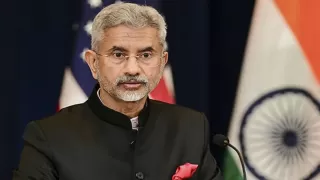Temples around the world are not only centers of spiritual devotion but also repositories of immense wealth. In 2025, these sacred sites have accumulated treasures that span centuries, attracting millions of devotees and pilgrims annually. From hidden vaults filled with gold and jewels to daily donations running into crores, these temples stand as monumental symbols of faith, history, and prosperity.
This article delves into the top five richest temples globally, highlighting their estimated net worth, sources of income, and the treasures that make them stand out.
5. Golden Temple
- Location: Amritsar, Punjab
- Estimated Net Worth: Not publicly disclosed
- Annual Revenue: ₹500 crore
- Gold Content: Approximately 400 kg used in plating
The Golden Temple, also known as Sri Harmandir Sahib, is the holiest shrine in Sikhism. Built in the 16th century by Guru Arjan Dev, it was later gold-plated by Maharaja Ranjit Singh. Its architecture is a blend of Hindu and Islamic styles, symbolizing unity and equality. The temple's golden dome and the surrounding sacred pool create a breathtaking spiritual ambiance.
Every day, the Golden Temple serves free meals (Langar) to over 100,000 people from all walks of life. This tradition reflects the Sikh principles of selfless service and equality. Devotees also participate in seva (voluntary service), helping maintain the temple and its community programs, emphasizing the temple’s spiritual ethos beyond its wealth.
The temple attracts millions of visitors annually, not only for devotion but also for its architectural grandeur. Its revenue, primarily from donations and offerings, helps maintain religious activities, community services, and the upkeep of one of the world’s most visited religious landmarks, cementing its importance both spiritually and culturally.
4. Shirdi Sai Baba Temple
- Location: Shirdi, Maharashtra
- Estimated Net Worth: ₹2,000 crore
- Assets: ₹1,800 crore in bank holdings, over ₹2,000 crore in collections, 380 kg of gold, 4,428 kg of silver
Dedicated to Sai Baba, a revered spiritual teacher, the Shirdi Sai Baba Temple is visited by millions of devotees annually. The temple complex was constructed in 1922, housing the samadhi (final resting place) of Sai Baba along with shrines that commemorate his teachings and miracles. Its serene atmosphere attracts pilgrims seeking peace and spiritual guidance.
The temple’s wealth largely comes from donations, offerings, and gold contributions from devotees. These funds are used for charitable activities, including hospitals, educational programs, and community welfare initiatives. This emphasizes Sai Baba’s teachings of compassion, service, and equality among all people.
Over the years, the temple has expanded its facilities to accommodate the increasing number of devotees. Its collections and assets, including gold and silver, make it one of the richest temples in India, reflecting not just devotion but also the widespread faith and cultural significance of Sai Baba.
3. Guruvayur Temple
- Location: Guruvayur, Kerala
- Estimated Net Worth: ₹2,500 crore
- Annual Revenue: ₹400 crore
- Assets: 271 acres of land, ₹2,053 crore in fixed deposits, 124 kg of plain gold, 72 kg of studded gold, 6,073 kg of silver
Guruvayur Temple, often called the "Dwarka of the South," is dedicated to Lord Krishna and is believed to be more than 5,000 years old. The temple’s iconic deity is central to its spiritual significance, drawing devotees from across India and abroad for worship and festivals.
The temple’s wealth is managed by the Kerala Devaswom Board and comes from donations, rituals, and offerings. Its extensive land holdings, fixed deposits, and substantial reserves of gold and silver illustrate the temple's financial strength alongside its religious importance. Festivals like Guruvayur Ekadasi attract huge crowds, enhancing both spiritual and economic activity.
In addition to its religious significance, Guruvayur Temple plays an important role in the local community through charitable initiatives, educational support, and preservation of culture. Its well-maintained architecture, coupled with rituals, daily worship, and community engagement, makes it a major pilgrimage and cultural hub in southern India.
2. Padmanabhaswamy Temple
- Location: Thiruvananthapuram, Kerala
- Estimated Net Worth: ₹1.2 lakh crore (~US$20 billion)
- Treasures: Vaults containing gold idols, coins, and jewels
- Mystery Vault: Vault B remains unopened, possibly containing more treasures
The Padmanabhaswamy Temple is a marvel of Dravidian architecture dedicated to Lord Vishnu. It has been historically maintained by the Travancore royal family and is one of the 108 Divya Desams. Its underground vaults, discovered in 2011, revealed treasures including gold idols, historic coins, and jewelry from centuries past.
Vault B of the temple remains unopened under a Supreme Court order, heightening the intrigue surrounding its wealth. The temple’s assets are valued at over ₹1.2 lakh crore, making it one of the richest religious institutions globally. Its wealth is carefully preserved, reflecting centuries of devotion and royal patronage.
Besides its material wealth, the temple plays a vital role in the spiritual life of devotees. Its festivals, daily rituals, and charitable programs continue to attract thousands of worshippers. The blend of religious, historical, and cultural significance makes Padmanabhaswamy Temple a unique site of devotion and prosperity.
1. Tirumala Tirupati Venkateswara Temple
- Location: Tirupati, Andhra Pradesh
- Estimated Net Worth: ₹3 lakh crore
- Annual Revenue: ₹1,400 crore
- Gold Holdings: Over 10 tons
The Tirumala Tirupati Venkateswara Temple is dedicated to Lord Venkateswara, an incarnation of Vishnu. Located in the Tirumala Hills, it is one of the most visited religious sites in the world, receiving over 50,000 devotees daily. Its immense wealth comes from donations, gold offerings, and fixed assets accumulated over centuries.
The temple’s assets include gold, cash balances, and valuable real estate, totaling approximately ₹3 lakh crore in estimated net worth. The trust managing the temple also invests in fixed deposits, further enhancing its revenue. Special events, festivals, and rituals ensure a continuous inflow of offerings, contributing significantly to its yearly revenue.
Beyond its financial prominence, the temple is a center of cultural and spiritual life. It hosts charitable initiatives such as free meals, education support, and healthcare facilities. Its architectural grandeur, coupled with centuries-old traditions and devotional practices, establishes Tirumala Tirupati Venkateswara Temple as the most significant and wealthiest temple in the world.
These temples exemplify the convergence of devotion, history, and wealth. They are not only religious centers but also cultural landmarks that continue to inspire millions of devotees worldwide.
Also Read: Top 5 Best AI Chatbots in 2025 Revolutionizing Conversations




























